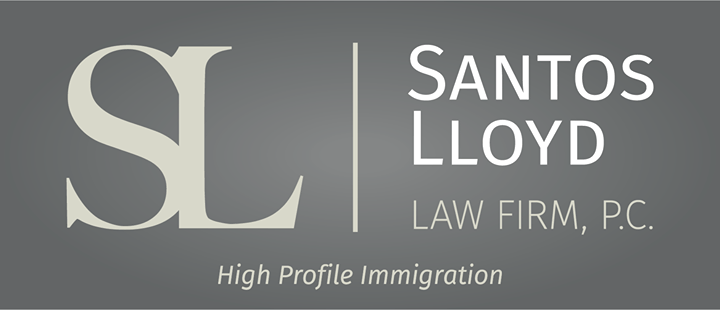Can the Child Status Protection Act (CSPA) save my eligibility for Green Card?
The Immigration and Nationality Act (INA) defines a child as a person who is both unmarried and under 21 years old. If someone applies for lawful permanent resident (LPR) status as a child but turns 21 before being approved for LPR status (also known as getting a Green Card), that person can no longer be considered a child for immigration purposes. This situation is commonly referred to as “aging out” and often means that these applicants would have to file a new petition or application, wait even longer to get a Green Card, or may no longer be eligible for a Green Card.
Congress recognized that many children were aging out due to large USCIS processing backlogs, so it enacted the Child Status Protection Act (CSPA) to protect certain children from aging out.¹ The CSPA went into effect on August 6, 2002.
CSPA does not change the definition of a child. Instead, CSPA provides a method for calculating a person’s age to see if they meet the definition of a child for immigration purposes. The calculated age is the child’s “CSPA age.” This allows some people to remain classified as children beyond their 21st birthday. However, CSPA does not change the requirement that you must be unmarried in order to remain eligible for classification as a child.
CSPA applies only to the following people:
- Immediate relatives (including derivatives of widow(er)s);
- Family-sponsored preference principal applicants and derivative applicants;
- Violence Against Women Act (VAWA) self-petitioners and derivative applicants;
- Employment-based preference derivative applicants;
- Diversity Immigrant Visa (DV) derivative applicants;
- Derivative refugees; and
- Derivative asylees.
If you are applying for a Green Card based on one of the categories above, you are eligible for CSPA consideration if either your qualifying Form I-485, Application to Register Permanent Residence or Adjust Status, or one of the following underlying forms was filed or pending on or after Aug. 6, 2002:
- Form I-130, Petition for Alien Relative;
- Form I-360, Petition for Amerasian, Widow(er), or Special Immigrant;
- Form I-140, Immigrant Petition for Alien Worker;
- Form I-526, Immigrant Petition by Alien Entrepreneur;
- Form I-589, Application for Asylum and for Withholding of Removal;
- Form I-590, Registration for Classification as a Refugee; or
- Form I-730, Refugee/Asylee Relative Petition.
The CSPA calculation for immediate relatives is different than the calculation for family and employment preference immigrants.
If you are an immediate relative, a VAWA self-petitioning abused spouse or child of a U.S. citizen, or a derivative child of a VAWA self-petitioning abused spouse or child of a U.S. citizen, your age is frozen on the date the Form I-130 or Form I-360 is filed. If you were under the age of 21 at the time the petition was filed, you are eligible for CSPA and will not age out. However, you must remain unmarried in order to qualify.
If you are a family preference (including VAWA self-petition), employment-based preference, or diversity visa (DV) applicant, calculate your CSPA age by subtracting the number of days your petition was pending (pending time) from your age on the date an immigrant visa becomes available to you (age at time of visa availability). However, you must remain unmarried in order to qualify.
The formula for calculating CSPA is:
Age at Time of Visa Availability - Pending Time = CSPA Age
Example:
You are 21 years and 4 months old when USCIS considers an immigrant visa available to you. Your petition was pending for 6 months. Calculate your CSPA age as follows:
21 years and 4 months - 6 months = 20 years and 10 months
Age at Time of Visa Availability
The date the visa is considered available is the later of these 2 dates:
- The date the petition was approved; or
- The first day of the month of when USCIS considers a visa available for filing an adjustment of status application based on your immigrant preference category, country of chargeability, and priority date. You must check the USCIS website to determine which of the 2 charts (Dates for Filing or Final Action Dates) from the Department of State (DOS) Visa Bulletin you may use to file an adjustment of status application.
You will need to use the visa bulletin (see related article on our website for understanding the visa bulletin and retrogression) to complete the calculation and determine the appropriate “time of visa availability”.
**There was a recent USCIS policy change with regard to this portion of the CSPA calculation!**²
The recent change in policy allows the use of Chart B, Dates for Filing (earliest date when applicants may be able to apply), to determine when the adjusted age is calculated rather than Chart A, Final Action Dates (dates when visas may finally be issued). Prior to the change, the agency required children to use Chart A.
Pending Time
The length of time a petition was pending (pending time) is the number of days between the date that it is properly filed (filing date) and the approval date.
The formula determining the length of time the petition was pending is as follows:
Approval Date - Filing Date = Pending Time
Example:
Your mother filed a petition for you on Feb. 1, 2016. We approved the petition on Aug. 1, 2016.
Aug. 1, 2016 - Feb. 1, 2016 = 6 months
Sought to Acquire Requirement
In order to benefit from CSPA as a family preference (including VAWA self-petition), employment-based preference, or DV applicant, you must seek to acquire lawful permanent resident status within 1 year of when a visa becoming available to you for filing an adjustment of status application. This is referred to as the “sought to acquire” requirement.
You may satisfy this requirement by:
- Properly filing a Form I-485, Application to Register Permanent Residence or Adjust Status;
- Submitting a completed Part 1 of Form DS-260, Immigrant Visa Electronic Application;
- Paying the immigrant visa fee to the DOS.
The change in policy also affects when the one-year filing requirement starts. Under the prior policy, applicants could wait until the priority date became current in Chart A to take action. Now they must pay attention each month to whether the USCIS is allowing applicants to use Chart B for filing purposes. If so, the one-year period begins on that month, not when the priority date becomes current using Chart A.
I know this all seems extremely complex and confusing, many immigration practitioners thought so too! So, an online calculator was developed to assist with calculating CSPA, a link to this online calculator is below:
https://www.immihelp.com/cspa-calculator/
If you have additional questions about CSPA or believe this calculation may apply in your case, please contact our office for professional assistance!
This blog is not intended to be legal advice and nothing here should be construed as establishing an attorney client relationship. Please schedule a consultation with an immigration attorney before acting on any information read here.






